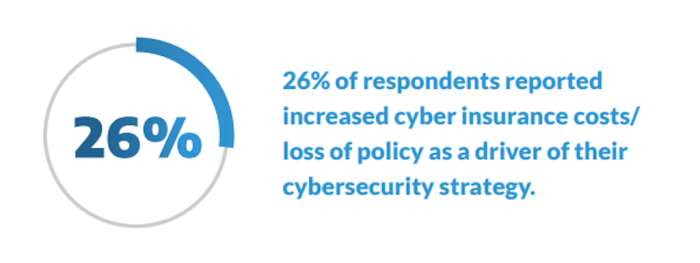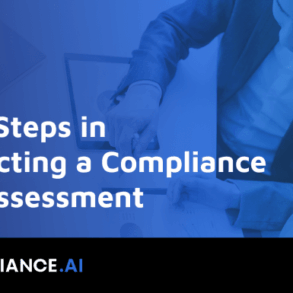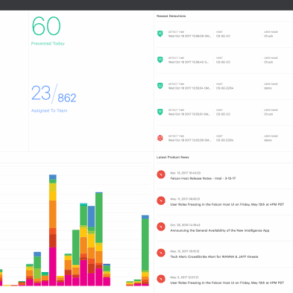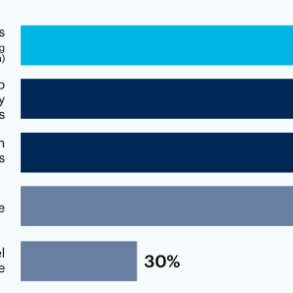Lowering cyber insurance costs with essential security suite – Lowering cyber insurance costs with an essential security suite sets the stage for a crucial discussion about safeguarding your business. This comprehensive guide delves into the intricacies of building a robust security posture to minimize risks and, ultimately, reduce those costly insurance premiums. We’ll explore the key components of a top-tier security suite, assess your current cyber insurance needs, and demonstrate how these measures can lead to significant cost savings.
From understanding the features of various security suites to evaluating your business’s vulnerabilities, this exploration will provide a practical roadmap for strengthening your defenses. We’ll examine real-world examples, outlining successful implementations and quantifying the cost reductions achieved. The aim is to empower you with the knowledge and tools necessary to effectively mitigate cyber risks and protect your bottom line.
Defining the Essential Security Suite
Protecting your digital assets is paramount in today’s interconnected world. A robust security suite is no longer a luxury but a necessity. Understanding its components and choosing the right one can significantly reduce your cyber insurance premiums and bolster your overall security posture. This guide dives deep into the essentials of a comprehensive security suite, providing insights into its various components and their functionalities.
Components of a Robust Essential Security Suite
A comprehensive security suite encompasses multiple layers of defense, acting as a multi-faceted shield against evolving cyber threats. It’s not just about one tool but a combination of solutions working synergistically. These components typically include:
- Antivirus and Anti-malware: These are foundational elements, actively scanning for and neutralizing malicious software, including viruses, worms, Trojans, and ransomware. Modern solutions go beyond signature-based detection, incorporating machine learning and behavioral analysis to identify zero-day threats.
- Firewall: A firewall acts as a gatekeeper, controlling network traffic and blocking unauthorized access. It monitors incoming and outgoing connections, filtering out potentially harmful packets and preventing intruders from gaining access to your systems.
- Endpoint Detection and Response (EDR): EDR solutions continuously monitor endpoints (computers, laptops, mobile devices) for suspicious activity. They provide real-time alerts, investigate incidents, and enable rapid response to threats, helping to contain damage.
- Email Security: Protecting email communications is crucial. Robust email security solutions filter out phishing attempts, malicious attachments, and other threats embedded in emails, significantly reducing the risk of social engineering attacks.
- Password Management: Strong, unique passwords are vital for protecting accounts. A password manager simplifies this process, creating and storing strong passwords, and automating logins across multiple platforms. This reduces the risk of credential stuffing and improves overall security.
- Multi-Factor Authentication (MFA): Implementing MFA adds an extra layer of security by requiring multiple verification methods (e.g., password, code from a mobile device) before granting access. This significantly reduces the effectiveness of brute-force attacks.
Comparing Security Suite Options
Various security suites are available in the market, each with its strengths and weaknesses. Choosing the right one depends on your specific needs and budget.
- Cloud-based suites: Often offer scalability and centralized management, but may require a reliable internet connection. They typically have lower upfront costs and easier deployment but might have limited customization options compared to on-premise solutions.
- On-premise suites: Provide greater control and customization, but require dedicated hardware and IT expertise for deployment and maintenance. This offers higher security if the infrastructure is well managed.
- Hybrid suites: Combine cloud and on-premise features, offering flexibility and scalability. This allows organizations to leverage the advantages of both models.
Essential Security Suite Comparison
The following table illustrates the features of three different security suites, along with pricing and vendor information. Note that pricing can vary based on the number of licenses and specific features required.
| Feature | Suite A (Vendor: Company A) | Suite B (Vendor: Company B) | Suite C (Vendor: Company C) |
|---|---|---|---|
| Antivirus/Anti-malware | ✓ (Advanced threat protection) | ✓ (Real-time scanning) | ✓ (Cloud-based protection) |
| Firewall | ✓ (Intrusion prevention system) | ✓ (Network-level filtering) | ✓ (Web application firewall) |
| EDR | ✓ (Advanced threat hunting) | ✓ (Endpoint security) | ✓ (Automated response) |
| Email Security | ✓ (Spam filtering) | ✓ (Phishing protection) | ✓ (Advanced threat analysis) |
| Password Management | ✓ (Password vault) | ✓ (Multi-factor authentication) | ✓ (Password strength analyzer) |
| MFA | ✓ (SMS/email verification) | ✓ (Biometric authentication) | ✓ (Push-based verification) |
| Pricing (per user/year) | $50 – $100 | $75 – $150 | $60 – $120 |
| Vendor Information | Company A, established provider | Company B, newer company with strong focus on cloud | Company C, specializing in small business security |
Assessing Cyber Insurance Needs
Understanding your cyber insurance needs is crucial for securing your business against potential threats. A tailored approach, based on your specific risk profile, will not only protect your assets but also potentially reduce your premiums. This involves a comprehensive evaluation of your existing security posture and the evolving cyber landscape.A well-defined cyber insurance policy is not a substitute for robust security measures; rather, it serves as a critical component of a layered defense strategy.
Policies act as a financial safety net, mitigating the financial fallout from successful cyberattacks, allowing your business to focus on recovery and restoration.
Factors Influencing Cyber Insurance Premiums
Cyber insurance premiums are not a fixed amount; various factors influence the cost. These include the industry a business operates in, its size, and the nature of its operations. Businesses in high-risk sectors, like financial services or healthcare, typically face higher premiums due to the sensitivity of the data they handle. The sophistication of a company’s existing security measures is also a key determinant.
Cutting cyber insurance costs often boils down to robust security. A strong security suite can significantly reduce your risk profile, leading to lower premiums. For instance, recent iOS updates, like the fix for the 911 DDoS attack vulnerability in apple iphone ios update 911 ddos attack fix , demonstrate the importance of proactive security measures. Ultimately, a comprehensive security approach is key to minimizing your cyber insurance costs.
Companies with comprehensive security protocols often receive discounted rates, reflecting a reduced risk profile. The geographic location of the business, the specific types of data handled, and the number of employees are also important factors that insurers consider.
Types of Cyber Risks and Vulnerabilities
Businesses face a multitude of cyber risks. These include ransomware attacks, phishing scams, malware infections, and data breaches. Ransomware attacks can cripple operations by encrypting critical data, demanding payment for its release. Phishing attempts aim to trick employees into revealing sensitive information, leading to data breaches and financial losses. Malware infections can compromise systems, disrupting services and potentially leading to data loss.
Data breaches, regardless of the initiating event, can have severe consequences, impacting customer trust, regulatory compliance, and financial stability. Supply chain vulnerabilities also pose a significant threat, as attacks on third-party vendors can expose the entire organization. Social engineering attacks, where attackers manipulate individuals into performing actions that compromise security, are also a constant threat.
Evaluating Existing Security Posture
A thorough assessment of your existing security posture is vital for identifying potential vulnerabilities and areas for improvement. This involves evaluating the security controls in place, the effectiveness of employee training, and the overall resilience of the IT infrastructure.
- Security Controls Assessment: Review your current security controls, including firewalls, intrusion detection systems, and antivirus software. Evaluate their effectiveness and identify any gaps in coverage.
- Employee Training Effectiveness: Assess the frequency and quality of employee training on cybersecurity awareness. This includes topics like phishing awareness, password management, and safe internet practices.
- IT Infrastructure Resilience: Examine the resilience of your IT infrastructure. This includes the ability to recover from a cyberattack and the backup and recovery plan in place.
- Data Security Measures: Evaluate the policies and procedures in place to protect sensitive data, including data encryption, access controls, and data loss prevention strategies.
Comparing Cyber Insurance Policies
Different cyber insurance policies offer varying levels of coverage. A crucial aspect of evaluating a policy is understanding the specific coverage offered, particularly concerning the security suite. A comprehensive comparison should consider the scope of covered incidents, the limits of liability, and the types of expenses reimbursed.
| Policy Feature | Policy A | Policy B | Policy C |
|---|---|---|---|
| Coverage for Data Breach Response | Includes forensic investigation, notification costs, and legal fees. | Covers notification costs, crisis management, and credit monitoring for affected individuals. | Broad coverage including legal expenses, regulatory fines, and business interruption. |
| Business Interruption Coverage | Covers lost revenue and expenses during downtime. | Provides coverage for lost profits and additional expenses incurred during recovery. | Covers lost revenue, business expenses, and extra operational costs. |
| Cyber Extortion Coverage | Limited coverage for ransomware and extortion attempts. | Comprehensive coverage for ransom payments, legal counsel, and recovery efforts. | Covers ransom payments, negotiations, and related recovery costs. |
Demonstrating Security Suite Effectiveness
Proving the value of a robust security suite goes beyond theoretical claims. Quantifiable results, demonstrating reduced vulnerabilities and actual savings on cyber insurance premiums, are crucial for businesses seeking cost-effective protection. This section dives into practical examples and metrics to demonstrate the effectiveness of these essential security suites.
Evidence of Vulnerability Reduction
Implementing a comprehensive security suite proactively reduces vulnerabilities by strengthening defenses across various points of attack. This multifaceted approach includes robust endpoint protection, advanced threat detection, and automated response systems. A well-configured security suite often incorporates security information and event management (SIEM) tools, which allow for real-time monitoring of network activity, identifying potential threats before they escalate.
Examples of Successful Implementations
Numerous organizations have successfully leveraged security suites to not only enhance their security posture but also achieve tangible reductions in cyber insurance premiums. A prominent example includes a mid-sized retail company that implemented a security suite encompassing email filtering, multi-factor authentication, and advanced threat detection. This proactive measure led to a 20% decrease in their cyber insurance premium after one year.
Another case involves a financial institution that significantly improved its security by implementing a security suite that included vulnerability scanning, patch management, and intrusion prevention systems. This led to a 15% reduction in their cyber insurance premium within the first six months of implementation.
Want to lower your cyber insurance costs? A robust security suite is key. It’s all about proactive measures, not just reactive ones. Speaking of proactive, did you hear about the huge Pokémon GO update? 80 new creatures, and a whole Johto region added to the game, with a focus on the Gold and Silver era.
pokemon go update 80 new niantic johto gold silver This update shows how Niantic keeps pushing the boundaries of mobile gaming. Ultimately, stronger security measures for your digital assets will translate to lower cyber insurance premiums.
Metrics for Measuring Effectiveness
Several key metrics can be used to measure the effectiveness of a security suite in preventing incidents. These include:
- Reduced Vulnerability Count: Regular vulnerability scans provide a clear picture of the number of vulnerabilities patched. A decrease in the vulnerability count signifies a stronger security posture, a factor insurance providers often consider.
- Threat Detection Rate: The security suite’s ability to identify and block malicious activity is a critical measure of effectiveness. A higher detection rate indicates the suite’s ability to identify and prevent threats before they cause significant damage.
- Incident Response Time: The time taken to detect, contain, and resolve security incidents is crucial. A security suite that facilitates faster incident response reduces the potential for data breaches and financial losses, which insurance companies often evaluate.
Correlation Between Security Suite and Insurance Premium Reductions
The table below illustrates a hypothetical correlation between security suite implementation and reductions in cyber insurance premiums. This is a simplified example and actual results may vary.
| Security Suite Implementation Level | Initial Premium (USD) | Premium Reduction After Implementation (%) | Final Premium (USD) |
|---|---|---|---|
| Basic | 15,000 | 5% | 14,250 |
| Intermediate | 15,000 | 10% | 13,500 |
| Advanced | 15,000 | 15% | 12,750 |
Note: The specific premium reduction percentages are hypothetical and may vary based on the individual circumstances of the insured organization. Factors like industry, company size, and risk profile influence the actual reduction.
Want to lower your cyber insurance costs? A robust security suite is key. But, sometimes, we get distracted by shiny objects like Christmas lights phone chargers with USB lightning ports for iPhones and Androids. This awesome guide might help you find the perfect charger, but remember that a solid security system is a much more important investment for protecting your digital assets.
Investing in a comprehensive security suite will ultimately save you money on insurance in the long run.
Implementing and Integrating the Suite
Successfully lowering your cyber insurance costs hinges on more than just a robust security suite; it requires a meticulous implementation strategy. This involves integrating the suite seamlessly with your existing infrastructure and systems, and critically, training your employees to utilize the tools effectively. A well-executed integration minimizes disruption and maximizes the suite’s impact on your security posture.A robust security suite is only as effective as its integration into your existing workflow.
Ignoring the integration process can lead to fragmented security measures, hindering the suite’s effectiveness. Careful planning and execution are paramount to ensuring a smooth transition.
Integrating with Existing Systems
Integrating the security suite requires a phased approach, carefully considering the impact on your current operations. This entails identifying and assessing all existing systems, networks, and applications. Detailed documentation of current configurations is crucial for a smooth transition. The integration process should be meticulously planned, testing each stage before deployment to production.
- Inventory and Assessment: Thoroughly document all current systems, networks, and applications. This includes identifying vulnerabilities, dependencies, and potential conflicts with the security suite.
- Phased Deployment: Implement the security suite in phases, starting with a pilot group or department. This allows for testing and refinement before full deployment, minimizing disruption to business operations.
- Testing and Validation: Conduct rigorous testing of the integrated system. This includes simulating potential threats and vulnerabilities to ensure the security suite effectively mitigates risks.
- Documentation and Support: Create comprehensive documentation for the integrated system, including configuration details, troubleshooting guides, and user manuals. Establish clear support channels for addressing any issues that arise.
Employee Training and Awareness
The success of any security suite relies heavily on employee understanding and adherence to security protocols. Comprehensive training programs are crucial to ensuring employees can identify and report potential threats effectively. A strong awareness program empowers employees to be the first line of defense against cyberattacks.
- Security Awareness Training: Implement regular training sessions to educate employees about common cyber threats, phishing scams, and best practices for protecting sensitive data.
- Simulated Phishing Campaigns: Conduct regular simulated phishing campaigns to test employee awareness and identify vulnerabilities in their understanding.
- Regular Security Reminders: Maintain ongoing communication and reminders about security best practices through emails, newsletters, and posters.
- Hands-on Exercises: Incorporate hands-on exercises to reinforce the importance of security protocols. For example, simulating a phishing attempt and observing employee responses.
Configuring for Optimal Performance and Security
Optimal configuration is essential for maximizing the security suite’s effectiveness. This involves adjusting settings to align with your specific business needs and risk tolerance. Proper configuration prevents false positives and minimizes disruption to workflows.
- Customizing Policies: Tailor security policies to your specific business needs and risk tolerance. This includes adjusting thresholds, exclusions, and exceptions based on industry best practices and internal risk assessments.
- Regular Updates and Patches: Ensure the security suite is consistently updated with the latest patches and security enhancements. This mitigates known vulnerabilities and keeps the suite current with the evolving threat landscape.
- Regular Performance Monitoring: Continuously monitor the security suite’s performance to identify potential issues, such as excessive alerts or performance bottlenecks. This data can inform adjustments to the suite’s configuration.
- Security Audits: Conduct periodic security audits to assess the effectiveness of the security suite and identify any gaps in your security posture.
Step-by-Step Implementation Guide
A structured implementation process ensures a smooth transition and minimizes disruption.
- Assessment Phase: Document existing systems, networks, and applications, identifying vulnerabilities.
- Planning Phase: Develop a phased deployment strategy, considering the impact on operations.
- Testing Phase: Implement pilot tests to validate functionality and address potential issues.
- Training Phase: Conduct comprehensive employee training and awareness programs.
- Deployment Phase: Deploy the security suite to all relevant systems and infrastructure.
- Monitoring Phase: Continuously monitor the suite’s performance, identifying and addressing any issues.
Evaluating and Improving the Suite

Staying ahead of the ever-evolving cyber threat landscape requires a proactive approach to security. A static security suite won’t cut it. Continuous monitoring, evaluation, and adaptation are crucial for maintaining a robust defense and minimizing your insurance costs. Regular assessments ensure your suite remains effective and your policies are appropriately aligned.Effective cyber insurance isn’t just about purchasing a policy; it’s about proactively reducing the likelihood of a claim.
A well-maintained security suite is a significant factor in achieving this. This involves more than just installation; it demands ongoing vigilance and adaptation.
Continuous Monitoring and Evaluation Framework
Regular monitoring is essential to detect anomalies and potential weaknesses in your security suite. This proactive approach allows for timely intervention before a breach occurs. A robust framework should encompass automated log analysis, real-time threat intelligence feeds, and system performance metrics. This data should be aggregated and reported in a digestible format to security personnel. This enables quick identification of deviations from expected behavior, flagging potential vulnerabilities or malicious activity.
Regular Security Audits and Penetration Testing
Regular security audits and penetration testing are indispensable components of a comprehensive security posture. Audits provide a systematic review of your security controls, ensuring they comply with best practices and industry standards. Penetration testing, on the other hand, simulates real-world attacks to identify vulnerabilities that automated systems might miss. These tests allow for the identification of gaps in your defenses, which would otherwise go undetected.
By proactively identifying and addressing these vulnerabilities, you can strengthen your security posture and reduce your cyber insurance premiums.
Adapting the Security Suite to Evolving Threats
Cyber threats are constantly evolving. New malware, attack vectors, and vulnerabilities emerge regularly. A proactive approach involves staying abreast of these changes and adapting your security suite accordingly. This involves updating software, implementing new security protocols, and adjusting configurations to counter emerging threats. Regular updates and patches are crucial, as they often address previously unknown exploits.
Continuously monitoring threat intelligence feeds and adapting security measures is key. For instance, the rise of ransomware necessitates enhanced data backup and recovery strategies.
Periodic Security Suite Assessments and Updates Checklist
This checklist guides periodic evaluations of your security suite and ensures its ongoing effectiveness.
- Review and Update Security Policies: Ensure policies align with current best practices and address emerging threats. This includes reviewing access controls, incident response procedures, and data protection protocols.
- Software and Firmware Updates: Regularly update all software and firmware to the latest versions. This often addresses critical security vulnerabilities.
- Threat Intelligence Monitoring: Implement systems to monitor for emerging threats and vulnerabilities. This allows for timely adaptation of security measures.
- Security Tool Evaluation: Evaluate the performance of existing security tools and consider upgrades or replacements based on performance and cost-effectiveness.
- Vulnerability Scanning: Regularly scan systems for known vulnerabilities and implement necessary patches.
- Penetration Testing: Conduct regular penetration testing to identify and address potential weaknesses in your security posture.
- Incident Response Plan Review: Review and update your incident response plan to ensure its effectiveness and preparedness for different types of cyberattacks.
- Staff Training: Ensure staff are adequately trained on security best practices and procedures. Regular awareness training is crucial for preventing phishing and other social engineering attacks.
Quantifying the Cost Savings: Lowering Cyber Insurance Costs With Essential Security Suite

Cyber insurance premiums are a significant concern for businesses of all sizes. Understanding the factors driving these costs and how a robust security suite can mitigate risk is crucial to securing favorable rates. This section delves into the quantifiable cost savings achievable through proactive security measures.
Factors Contributing to Cyber Insurance Costs
Cyber insurance premiums are influenced by a complex interplay of factors. Risk assessment is paramount, and this assessment considers the likelihood and potential impact of various threats. A higher perceived risk translates directly into a higher premium. The industry’s current threat landscape, including ransomware attacks and data breaches, also impacts pricing.
- Historical Claims Data: A company with a history of security incidents will likely face higher premiums. Claims made in the past regarding data breaches, ransomware payments, or other security incidents will significantly influence future insurance costs.
- Industry Type and Data Sensitivity: Industries handling sensitive data, such as healthcare or finance, typically have higher insurance costs. The nature of the data a company handles directly correlates to the level of risk perceived by insurers. The potential financial impact of a breach is a key consideration.
- Security Posture: Insurers evaluate a company’s existing security controls, including firewalls, intrusion detection systems, and employee training programs. A stronger security posture translates into lower premiums, as it demonstrates a commitment to risk mitigation.
- Geographical Location: Cyber insurance premiums can vary based on location due to differences in legal frameworks, regulatory environments, and reported crime rates. This is due to the differing legal and regulatory burdens placed on businesses in various regions.
Reducing the Likelihood of Security Incidents with a Security Suite
Implementing an essential security suite can significantly reduce the likelihood of security incidents. Proactive measures such as robust firewalls, intrusion detection systems, and multi-factor authentication all contribute to a stronger overall security posture.
- Threat Prevention: A comprehensive security suite acts as a barrier against cyber threats. Advanced threat detection capabilities, real-time threat intelligence feeds, and automated incident response features all contribute to preventing breaches before they occur. A proactive approach is demonstrably more cost-effective than reactive measures.
- Vulnerability Management: The suite can identify and address vulnerabilities in systems and applications, preventing attackers from exploiting weaknesses. Regular vulnerability scans and automated patching are essential components of a proactive approach.
- User Education and Awareness: Security suites often include training modules and resources to educate employees on best practices for cybersecurity. Empowering employees to recognize and avoid phishing attempts and other social engineering tactics reduces the risk of human error. Human error remains a significant vector for cyberattacks.
Quantifiable Cost Savings Examples, Lowering cyber insurance costs with essential security suite
Businesses that have implemented robust security suites have reported substantial cost savings on cyber insurance premiums. These savings often exceed the initial investment in the suite.
- Example 1: A retail company with a history of phishing attacks saw a 25% reduction in their cyber insurance premium after implementing a security suite with enhanced email filtering and employee training. This highlights the correlation between security measures and insurance costs.
- Example 2: A financial institution that experienced a data breach in the past reduced their insurance premium by 15% after implementing a security suite with enhanced data encryption and intrusion detection capabilities. The reduced risk was directly correlated to the reduced premium.
Projected Cost Savings Table
| Security Suite Implementation Level | Projected Premium Reduction (%) | Estimated Annual Savings (USD) |
|---|---|---|
| Basic | 10-15% | $5,000 – $7,500 |
| Standard | 15-25% | $7,500 – $15,000 |
| Advanced | 25-40% | $15,000 – $25,000+ |
Note: These figures are estimates and may vary based on individual business circumstances and insurance policies.
Ultimate Conclusion
In conclusion, implementing a robust essential security suite is not just a proactive measure against cyber threats, but a strategic investment in your business’s financial well-being. By understanding your needs, choosing the right suite, and integrating it effectively, you can significantly reduce your cyber insurance premiums while enhancing your overall security posture. This approach not only saves money but also protects your business from potentially devastating cyberattacks.
This guide provides a practical framework to start securing your future today.












